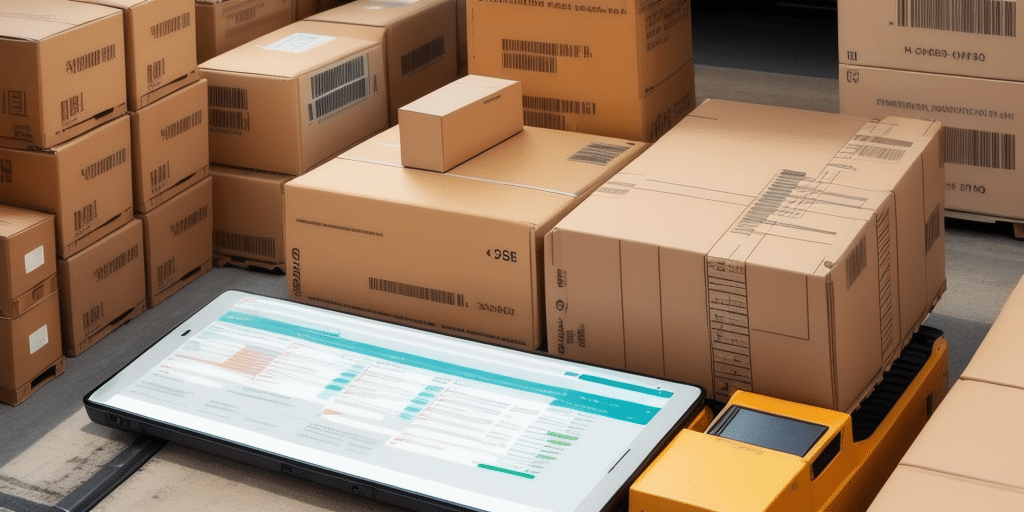How to Connect, Optimize, and Manage LSO for Priority ERP
Efficient operation of an Enterprise Resource Planning (ERP) system relies on various components and systems, with Logistics Service Optimization (LSO) being paramount. This article delves into everything you need to know about LSO in priority ERP systems, including its definition, significance, and strategies to effectively connect, optimize, and manage it.
What is Logistics Service Optimization (LSO) and Its Importance for Priority ERP?
Logistics Service Optimization (LSO) refers to the process of streamlining and enhancing logistics operations to ensure timely delivery of products and services to customers while minimizing costs and maximizing efficiency. In priority ERP systems, LSO is critical as it directly influences the flow of information and materials across the entire supply chain, encompassing procurement, production, inventory management, and order fulfillment.
Integrating LSO into a priority ERP system provides companies with real-time and predictive insights into logistics operations, such as inventory levels, transportation logistics, warehousing, and order fulfillment. According to a Gartner report, businesses that leverage real-time logistics data can improve their supply chain efficiency by up to 25%, leading to enhanced customer satisfaction and increased profitability.
Moreover, LSO ensures compliance with regulatory requirements and industry standards. With the growing complexity of global supply chains, companies must adhere to various regulations related to product safety, environmental sustainability, and labor practices. Incorporating LSO into priority ERP systems allows businesses to monitor and ensure compliance, thereby avoiding costly penalties and protecting their reputation.
Benefits of Integrating LSO with Priority ERP
Implementing a well-executed LSO strategy within priority ERP systems offers numerous advantages:
- Improved Supply Chain Visibility: Enables real-time tracking and tracing of products, enhancing communication with suppliers, distributors, and customers.
- Optimized Inventory Management: Provides real-time stock levels and automatic reordering capabilities, reducing inventory holding costs and minimizing stockouts.
- Streamlined Warehouse Processes: Enhances warehouse layout and optimizes picking and packing processes, reducing time spent searching for products.
- Efficient Transportation Logistics: Optimizes routing, load planning, and mode selection, resulting in faster delivery times and reduced transportation costs.
- Enhanced Order Fulfillment: Streamlines order processing, ensuring accurate order picking and efficient packing and shipping.
Beyond these, LSO can help companies reduce operational costs and improve overall efficiency by automating manual processes, minimizing errors, and providing actionable insights through real-time data and analytics. A study by McKinsey indicates that businesses utilizing data-driven logistics optimization strategies can achieve a cost reduction of up to 15% annually.
Implementing LSO in Priority ERP Systems
Steps to Connect LSO with Priority ERP
- Define Your Business Processes: Gain a comprehensive understanding of your business operations to identify the necessary data elements and workflow requirements for logistics processes.
- Identify Your Data Needs: Determine the types of data required to support your LSO strategy, including order data, product data, and shipment data.
- Integrate Your Systems: Use reliable data integration tools to connect your LSO platform with your priority ERP system, facilitating automated data exchange between the two.
- Configure Your Workflows: Set up workflows to ensure seamless data flow between your ERP system and LSO platform, enabling real-time data capture and analysis.
- Test Your System: Conduct thorough testing to verify that the integration functions correctly, ensuring data accuracy and workflow efficiency before going live.
Optimization Tips for LSO in Priority ERP
- Regular Monitoring and Analysis: Continuously track your logistics data to identify potential issues and opportunities for improvement.
- Automated Workflows: Implement automation to streamline logistics processes, enhancing efficiency and reducing the likelihood of errors.
- Alerts and Notifications: Set up alerts for critical events such as low inventory levels or shipment delays to enable prompt action.
- Predictive Analytics: Utilize predictive analytics to anticipate demand trends, forecast inventory needs, and optimize logistics accordingly.
- Stay Updated with Trends: Keep abreast of the latest developments in logistics management and adopt new tools and platforms that can enhance your LSO strategy.
Best Practices for Managing LSO in Priority ERP
- Establish Clear Policies and Procedures: Develop standard operating procedures, process workflows, and reporting metrics to guide logistics management.
- Foster a Culture of Accountability: Define clear roles and responsibilities for logistics management and regularly review performance metrics.
- Adopt a Proactive Management Approach: Conduct regular risk assessments, identify and resolve issues promptly, and implement continuous improvement initiatives.
- Engage Stakeholders: Collaborate with internal and external stakeholders to build strong relationships and secure buy-in for your LSO strategy.
- Regularly Update Your Strategy: Ensure your LSO strategy aligns with business goals and incorporates the latest trends and technologies.
Common Challenges and Solutions for LSO in Priority ERP
- Integration Issues: Overcome the complexity of integrating LSO with priority ERP systems by investing in robust data integration tools and thorough testing.
- Data Quality Issues: Maintain high-quality data by standardizing data entry processes and using validation tools to minimize errors.
- Workflow Management: Optimize workflows through careful planning and continuous monitoring to ensure efficient data flow and process execution.
- Resistance to Change: Address organizational resistance by communicating the benefits of LSO, providing adequate training, and involving employees in the implementation process.
Developing a well-defined LSO strategy, establishing clear policies, engaging stakeholders, and regularly reviewing the strategy are essential to overcoming these challenges and ensuring successful implementation.
Key Considerations When Implementing LSO in Priority ERP
- Alignment with Business Objectives: Ensure that your LSO strategy supports your overall business processes and aligns with your organizational goals.
- Clear Implementation Roadmap: Develop a detailed roadmap with specific timelines, milestones, and deliverables to guide the implementation process.
- Stakeholder Engagement: Involve employees, customers, suppliers, and external partners throughout the implementation to foster collaboration and support.
- Training and Education: Invest in training programs to equip employees with the necessary skills to effectively use LSO tools and platforms.
- Continuous Monitoring: Use metrics and Key Performance Indicators (KPIs) to track the progress of your LSO strategy and identify areas for improvement.
Importance of Regular Maintenance and Upgrades for LSO in Priority ERP
- Regular Data Backups: Protect critical logistics data by performing consistent backups, ensuring data can be restored in case of system failures.
- Software Updates and Upgrades: Keep your LSO tools and platforms updated with the latest features, functionalities, and security patches to maintain optimal performance.
- Ongoing System Monitoring: Continuously monitor system performance to identify potential issues and optimize operations.
- Periodic Strategy Reviews: Regularly assess and update your LSO strategy to ensure it remains aligned with business objectives and incorporates emerging trends and technologies.
Strategies for Troubleshooting and Resolving LSO Issues in Priority ERP
- Root Cause Analysis: Identify and address the underlying issues causing LSO problems through comprehensive analysis.
- Vendor Collaboration: Work closely with your LSO vendors and service providers to troubleshoot and resolve issues promptly.
- Tool and Platform Optimization: Ensure you have the appropriate tools and platforms in place, and provide continuous training to employees for effective usage.
- Strategy and Workflow Updates: Regularly refine your LSO strategy and workflows to align with evolving business needs and incorporate best practices.
Enhancing LSO Performance with Tools and Technologies
Leveraging advanced tools and technologies can significantly enhance the performance of LSO in priority ERP systems:
- Transportation Management Systems (TMS): Optimize transportation routes, modes, and loads while enabling real-time tracking of products. For instance, solutions like Oracle TMS provide comprehensive logistics management capabilities.
- Warehouse Management Systems (WMS): Improve picking, packing, and shipping processes to reduce labor costs and enhance warehouse efficiency. SAP WMS is a leading solution in this domain.
- Business Intelligence and Analytics Tools: Offer real-time insights into logistics performance, identify trends, and support informed decision-making. Tools like Tableau and Microsoft Power BI are widely used.
- Predictive Analytics and Forecasting Tools: Anticipate demand, forecast inventory needs, and optimize logistics processes. Platforms such as SAS Forecasting provide robust predictive analytics capabilities.
- Supply Chain Visibility Platforms: Offer end-to-end visibility into the supply chain, enabling real-time tracking and tracing of products. Informatica provides comprehensive supply chain visibility solutions.
Future Trends and Developments in LSO for Priority ERP
The landscape of LSO in priority ERP systems is continually evolving, with several emerging trends shaping its future:
- Artificial Intelligence and Machine Learning: AI and ML are increasingly used to optimize LSO workflows and automate decision-making processes, enhancing efficiency and accuracy.
- Blockchain Technology: Adoption of blockchain enhances supply chain visibility and transparency, ensuring data integrity and traceability.
- Predictive Analytics and Forecasting: Advanced analytics enable businesses to better anticipate demand, manage inventory, and streamline logistics operations.
- Internet of Things (IoT) Integration: IoT technologies facilitate real-time tracking and monitoring of products throughout the supply chain, improving visibility and responsiveness.
- Cloud-Based LSO Platforms: Cloud solutions offer greater scalability, flexibility, and cost-efficiency compared to traditional on-premises systems, allowing businesses to adapt quickly to changing demands.
Embracing these trends will enable businesses to further optimize their logistics operations, stay competitive, and respond effectively to the dynamic global market landscape.
In summary, Logistics Service Optimization is an essential component of priority ERP systems, providing businesses with the tools and insights needed to optimize logistics processes, enhance supply chain efficiency, and drive strategic decision-making. By implementing best practices, leveraging advanced technologies, and staying abreast of emerging trends, companies can maximize the benefits of LSO and maintain a competitive edge in the global marketplace.








